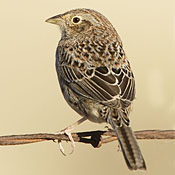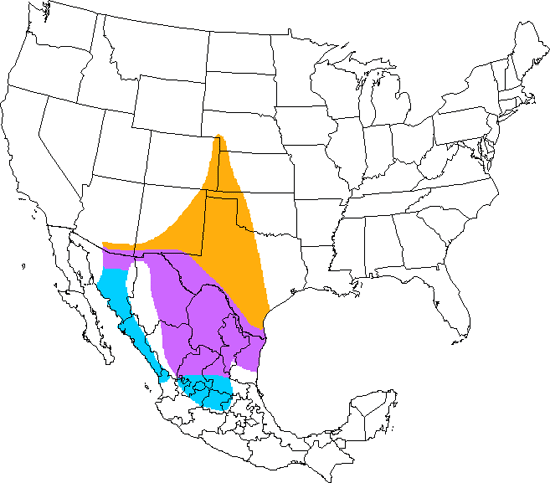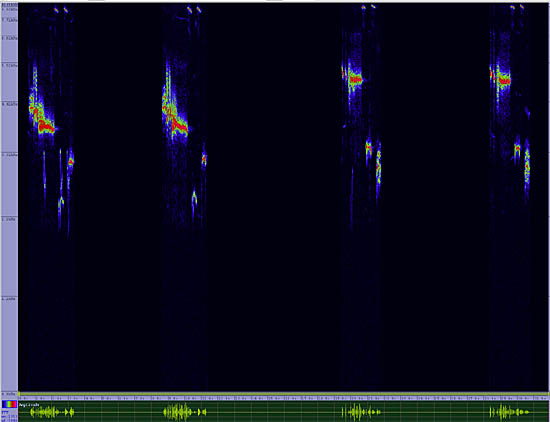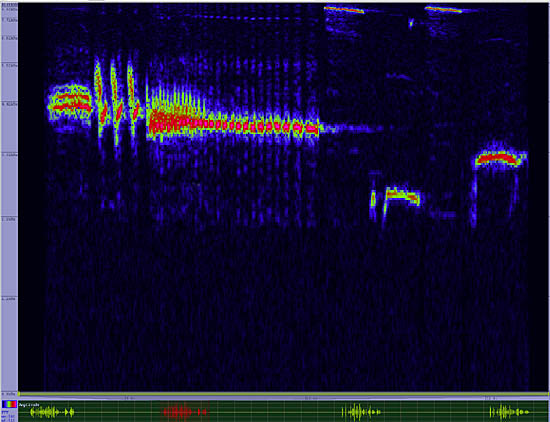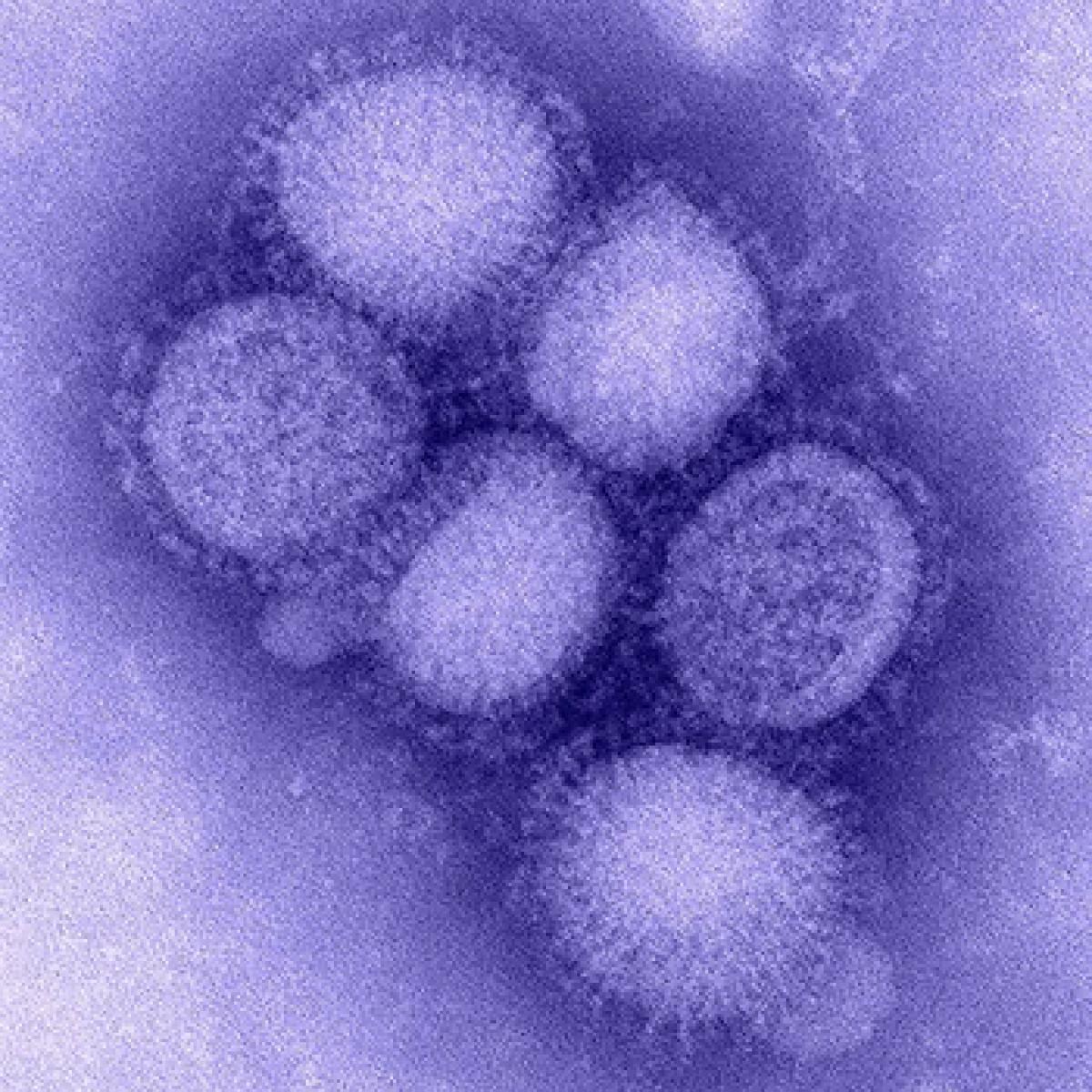Cassin's Sparrow
Aimophila cassinii

Perching
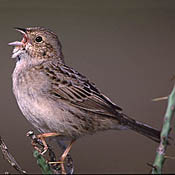
Length: 6 in. (15 cm )
The beautiful flight song of this sparrow is a quintessential part of the southwest grassland habitat. Flying up from its low perch, the male then floats down with tail spread and head back in full song. Insects are its primary food during the summer, but seeds are the winter food. Some data indicate that this sparrow doe not have to drink water for most of the year and apparently makes its own water from the seeds and insects it eats. The grassy nest is placed on the ground often in the shade of low vegetation or bushes.
The four-digit banding code is CASP.
Bibliographic details:
- Article: Cassin's Sparrow
- Author(s): Dr. Biology
- Publisher: Arizona State University School of Life Sciences Ask A Biologist
- Site name: ASU - Ask A Biologist
- Date published: 13 Jul, 2017
- Date accessed: 19 September, 2025
- Link: https://askabiologist.asu.edu/activities/bird/cassins-sparrow
APA Style
Dr. Biology. (Thu, 07/13/2017 - 15:36). Cassin's Sparrow. ASU - Ask A Biologist. Retrieved from https://askabiologist.asu.edu/activities/bird/cassins-sparrow
Chicago Manual of Style
Dr. Biology. "Cassin's Sparrow". ASU - Ask A Biologist. 13 Jul 2017. https://askabiologist.asu.edu/activities/bird/cassins-sparrow
MLA 2017 Style
Dr. Biology. "Cassin's Sparrow". ASU - Ask A Biologist. 13 Jul 2017. ASU - Ask A Biologist, Web. https://askabiologist.asu.edu/activities/bird/cassins-sparrow
Be Part of
Ask A Biologist
By volunteering, or simply sending us feedback on the site. Scientists, teachers, writers, illustrators, and translators are all important to the program. If you are interested in helping with the website we have a Volunteers page to get the process started.



